Welcome to
Young's Photo Gallery
James W. Young, Professional Photographer
Astronomical - 2
Outside of the various camera equipment owned by the author over the
years,
many of the astronomical pictures were taken with additional equipment,
such
as telescopes and tracking devices illustrated below. As
you scroll down the
image section, many will indicate which additional equipment was
used. They
They are as follows:
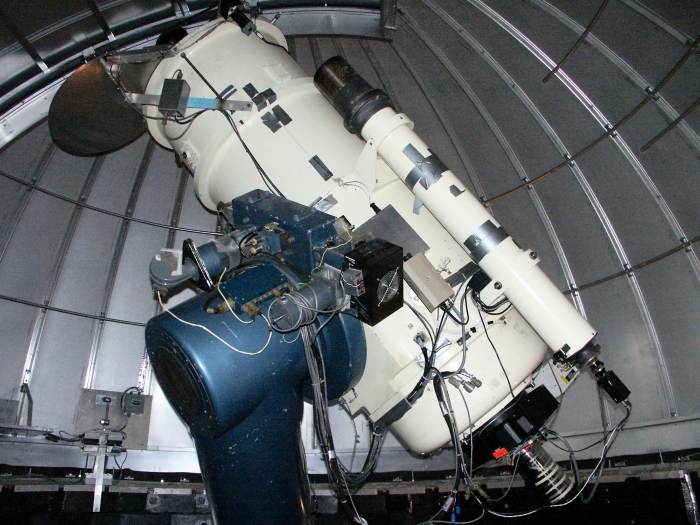
The 24-inch reflector at Table Mountain Observatory, circa 1966 -
present date.
This was a motor-driven analog instrument when set up in 1966, and had
clutches
and brakes to control slew, set, guide, and track motions for both RA
and Dec axes.
It is currently a computer controlled telescope with extremely accurate
pointing and
tracking capabilities.
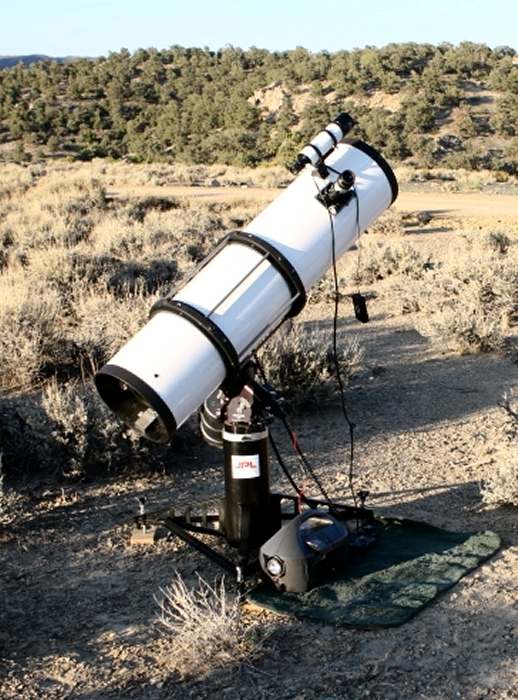
This is the author's 10-inch home-brew reflector, with a G-8 Losmandy
mounting
on a modified heavy duty tripod for field operations. It is
pictured here at the
Grandview Campground in the White Mountains of California. Polar
alignment is
extremely easy with Losmandy 'polar axis' finder. This current
telescope and
mounting are housed in the author's home observatory located in
Wrightwood,
California. The author's wife, Karen, uses this instrument to
make asteroid
occultation observations for IOTA, as well as variable star
measurements for
the AAVSO. This telescope, used since 2002, is easily transported
for field
operations from its normal home location.
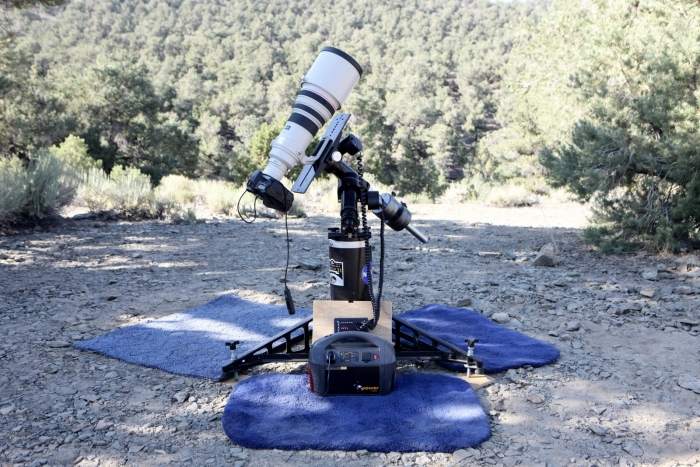
A completely new tracker
utilizing a second Losmandy G-8 mounting, with drive
assembly, was acquired to provide a separate system for a new Canon
400mm
f/2.8
telephoto lens. Some of the following images were taken with this
new
setup using the lens at four possible focal lengths;
400mm, 560mm, 800mm,
and 1120mm.
With the use of 1.4X and 2X extenders (and combinations of
of the two), images
were taken at f2.8, 4, 5.6, and 8.
In early 2012, my original Canon 20D was converted to better astrophotography
by the removal of the factory IR cut-off filter, and the installation of a new
Ha filter. Testing is underway, with a few images below showing the results.
Images
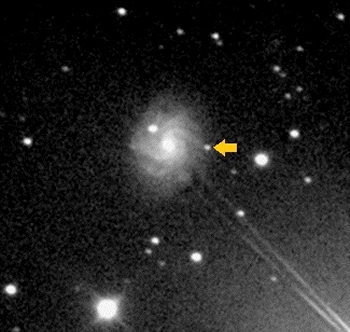
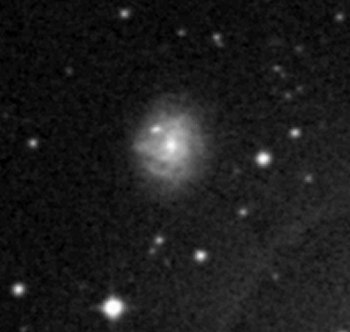
Using the 24-inch telescope at
Table Mountain, I discovered a supernova in the
small galaxy known as UGC 3053 on September 1, 2004. The original
image is
on the left (the supernova indicated by the yellow arrow), with a
previous image
of the same region (on the right) taken by the Palomar Sky Survey
many years
earlier. There is a bright star just off the image to the lower
right, causing
the flare. This was a type II supernova, measured at about
magnitude +20.
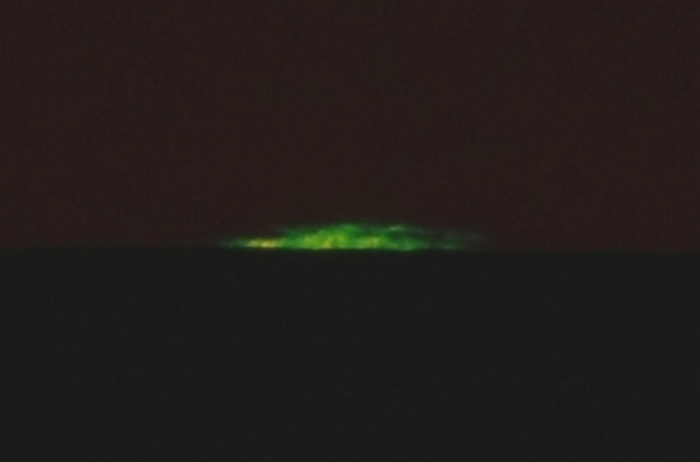
The green flash over the Pacific Ocean as seen from Jalama Beach County Park
some 50 miles west of Santa Barbara, California on December 24, 2009.
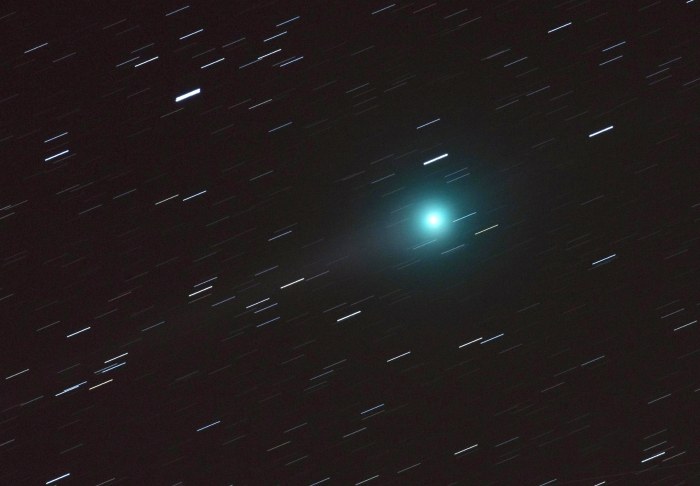
Comet C/2007 N3 Lulin from Table Mountain Observatory on February 19, 2009.
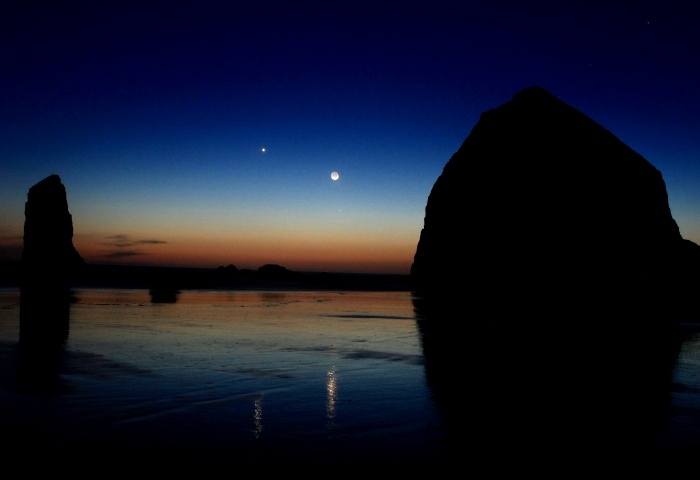
The setting crescent moon (note the earthshine), with Venus to the left, and
Mercury just below the moon, from Cannon Beach, Oregon on April 15, 2010.
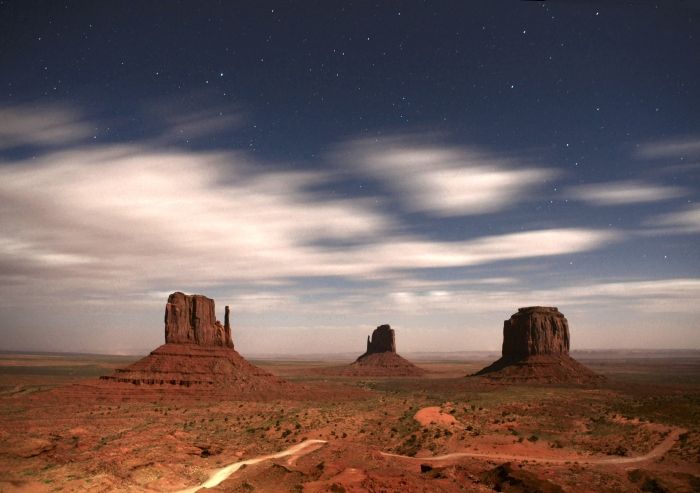
The constellation Lyra rising above the moving clouds over Monument Valley in
Arizona on May 23, 2010. West Mitten, East Mitten, and Merrick Buttes are
seen from left to right here on May 23, 2010.
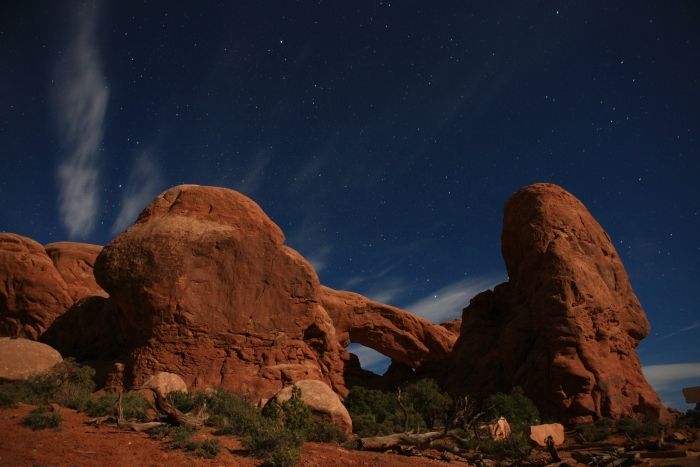
The constellation Lyra rises above one of the arches in Arches NP, Utah on May
24, 2010.
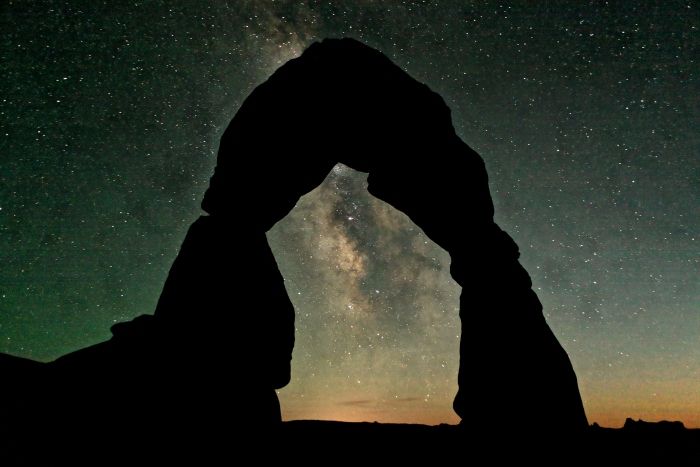
The Milky Way beyond Delicate Arch in Arches NP, Utah on May 25, 2010.
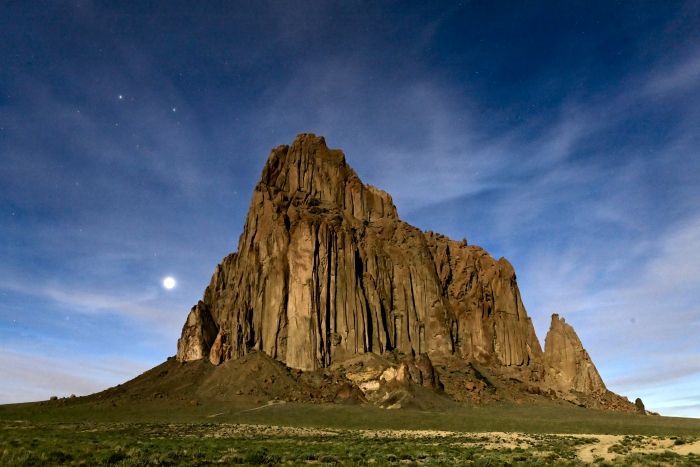
Shiprock, New Mexico is seen here in moonlight, with Venus setting in the west
on the left on May 25, 2010.
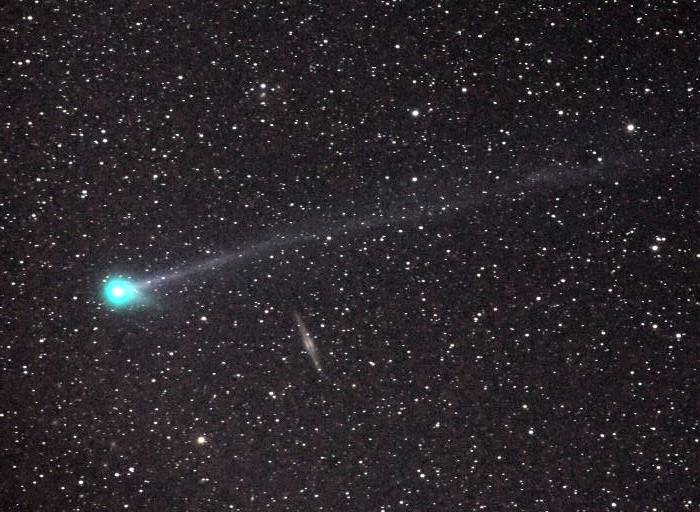
Comet C/2009 R1 McNaught from Inspiration Point on the Angeles Crest Highway
in California on June 8, 2010. NGC 891 is the edge-on galaxy near the center.
The following 18 images were taken from Grandview Campground in the White Mts
of California (east of Bishop) on the dates indicated.
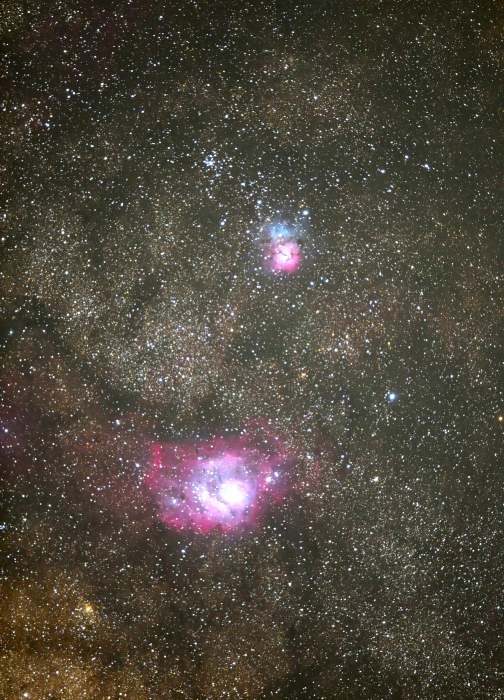
The Lagoon (M8 - lower) and Trifid (M20 - upper) nebulae in the constellation
Sagittarius on August 10, 2010.
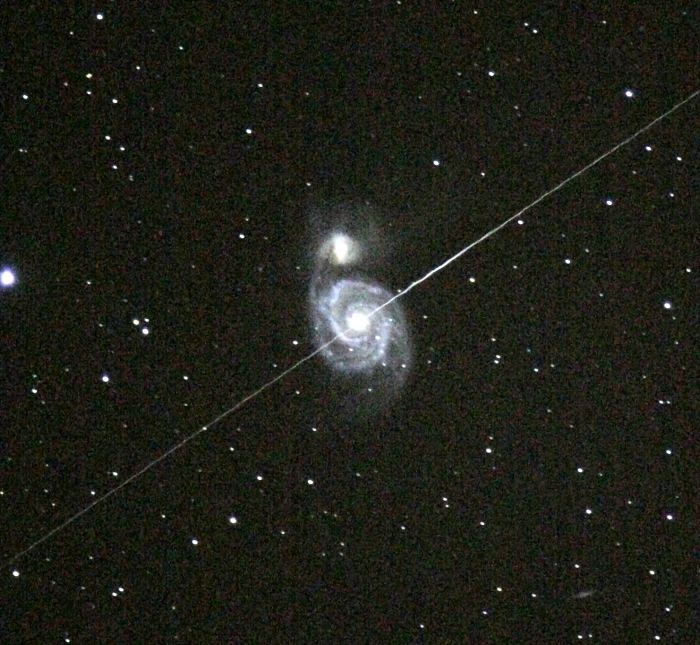
The Whirlpool Galaxy in the constellation of Canes Venatici on August 10, 2010.
Note the satellite trail intersects the center of the galaxy!
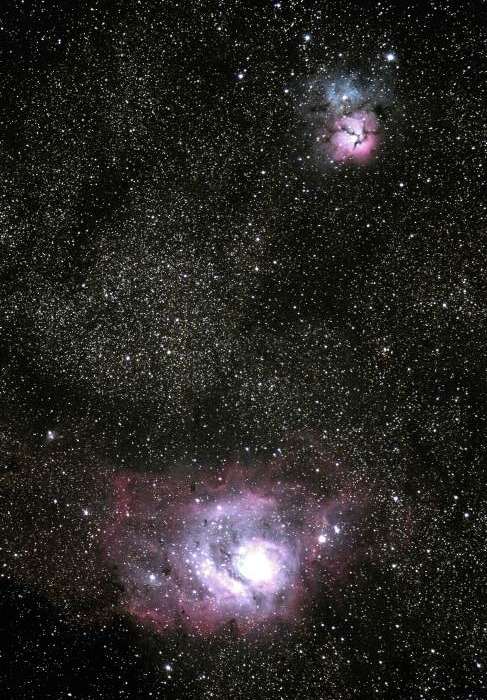
The Lagoon (M8) and Trifid (M20) Nebulae on August 10, 2010.
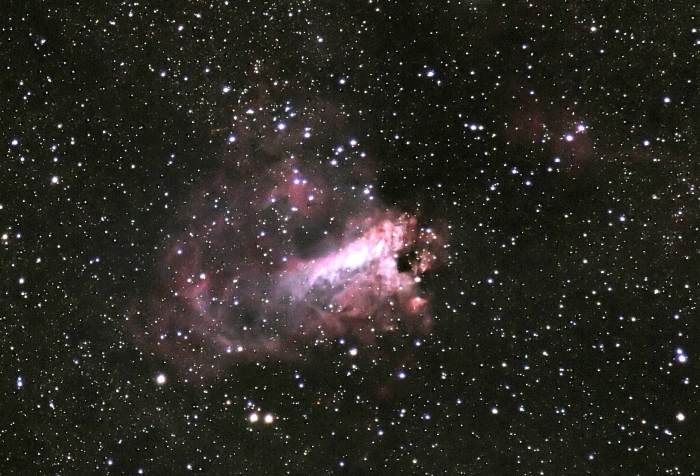
The Omega Nebula (M17) in the constellation Sagittarius on August 10, 2010.
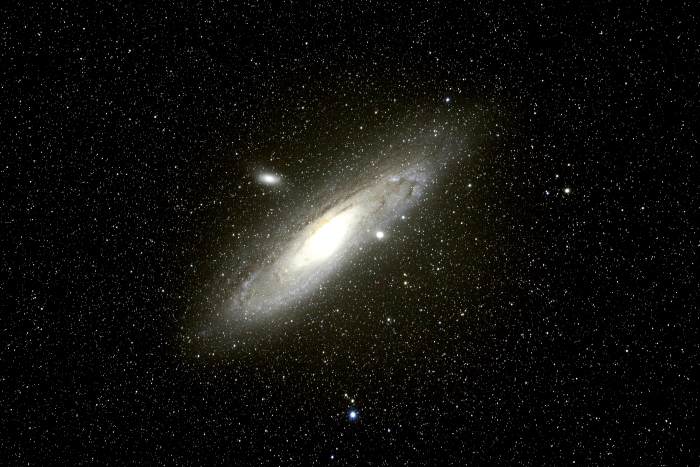
The Andromeda galaxy (M31) in the constellation Andromeda as seen on August
10, 2010. NGC 205 (M110) is the small patch to the upper left of center, and
M32 is the small round spot just to the right of center.
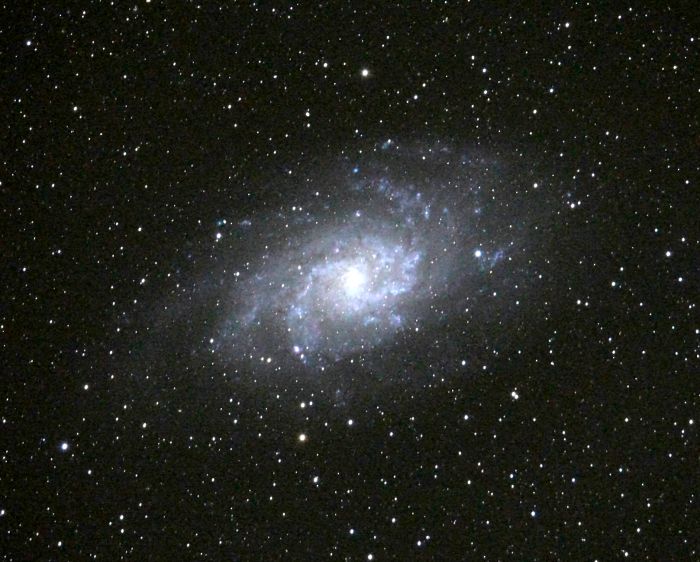
The spiral galaxy (M33) in the constellation Triangulum, also photographed on
August 10, 2010, and only a few degrees south of the Andromeda galaxy.
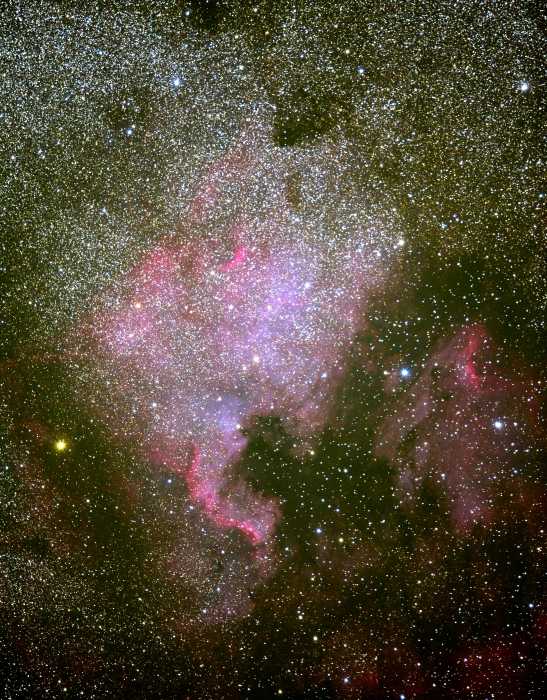
The North American Nebula (NGC 7000) in the constellation of Cygnus seen here
also on August 10, 2010. The fainter nebula to the right is the Pelican Nebula,
IC 5070.
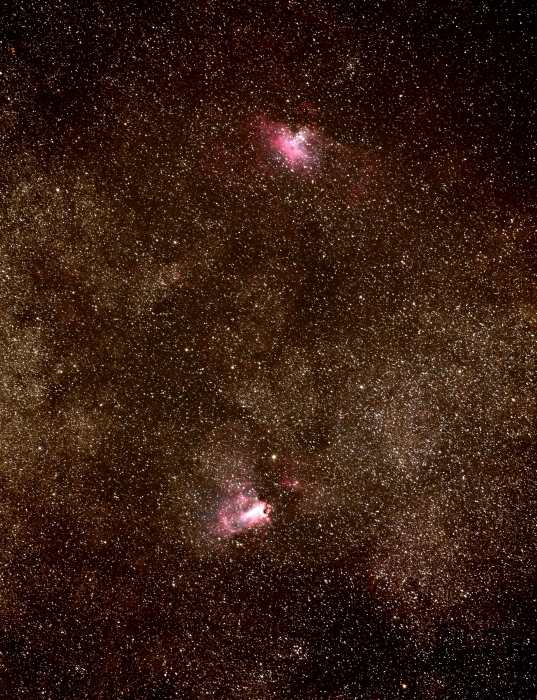
The Omega (M17 - lower) and Eagle (M16 - upper) nebulae seen here on August
11, 2010. The Eagle Nebula is located in the constellation Serpens Cauda.
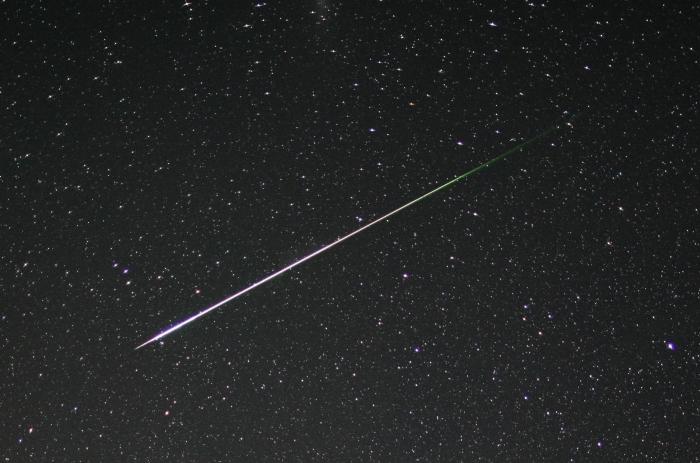
A bright Perseid fireball (meteor) imaged on August 12, 2010.
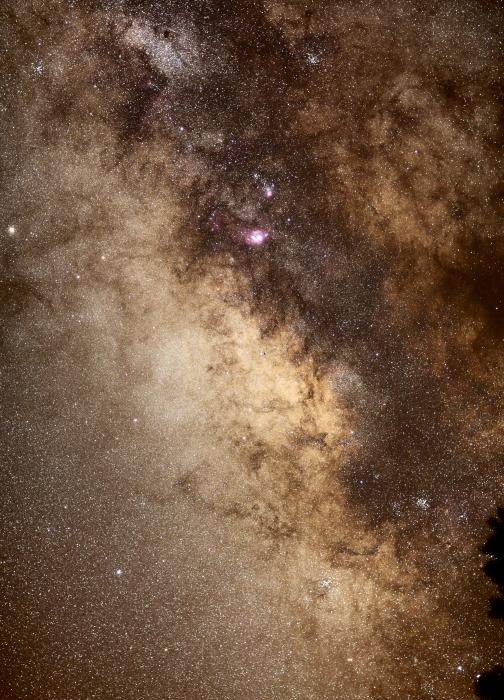
The center of the Milky Way Galaxy on August 12, 2010.
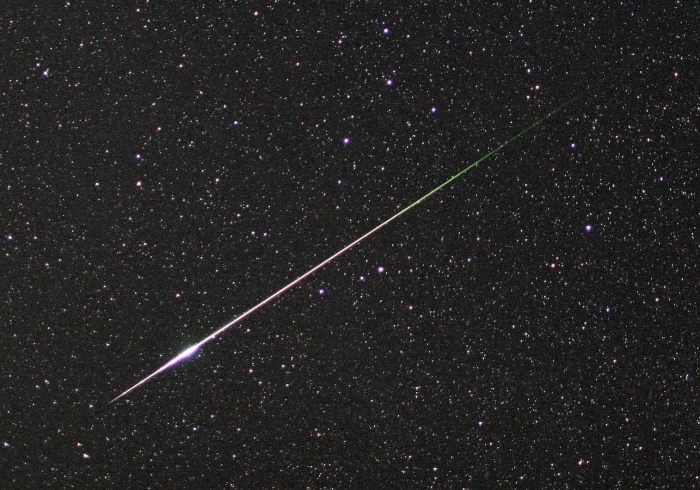
Another very bright Perseid fireball (meteor) imaged on August 13, 2010.
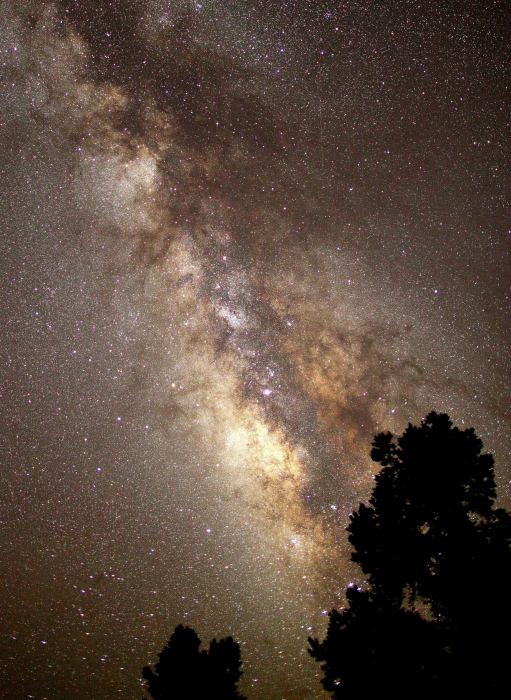
The Milky Way on August 13, 2010 (with a faint meteor).
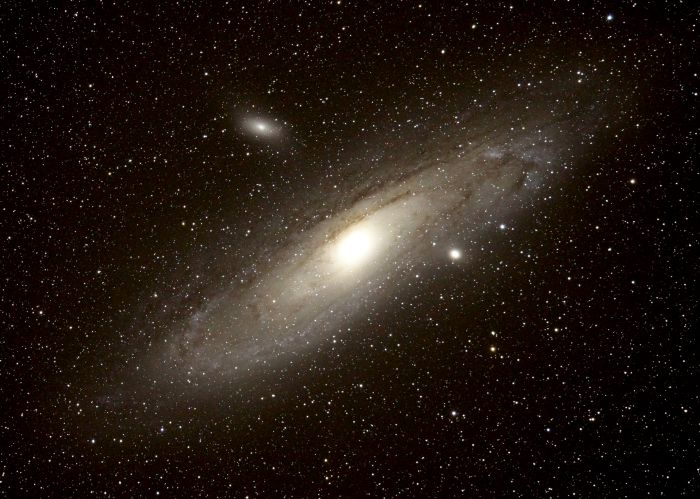
The Andromeda Galaxy, with NGC 205 (M110) and M32 on August 13, 2010.
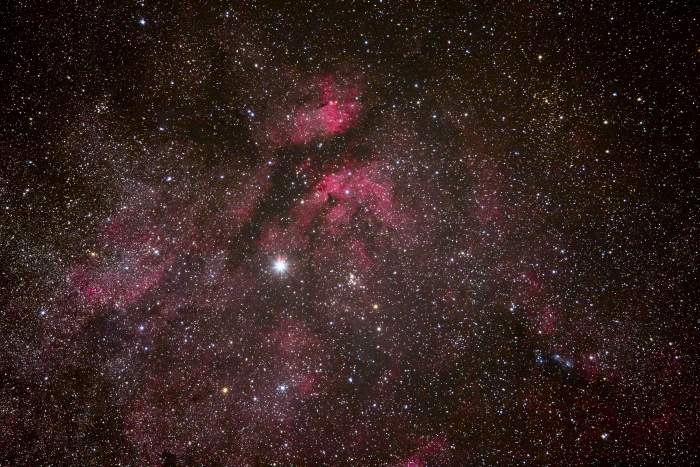
Gamma Cygni, named Sadr, is seen here surrounded by dusty reflection nebulae
know as IC 1318, along with a small star cluster, NGC 6910 (in the center) as
recorded on August 13, 2010.
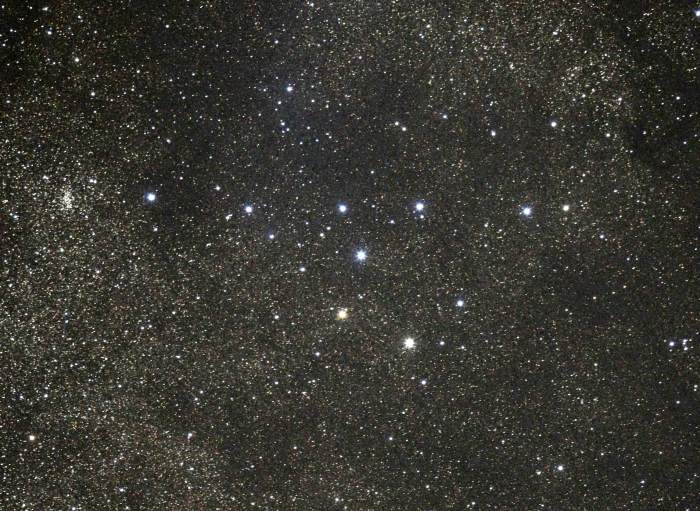
Known as the 'Coathanger', a cluster of stars resembles an upside down coat
hanger, along with a star cluster (NGC 6802) to the left, in the constellation
of Vulpecula on August 13, 2010.
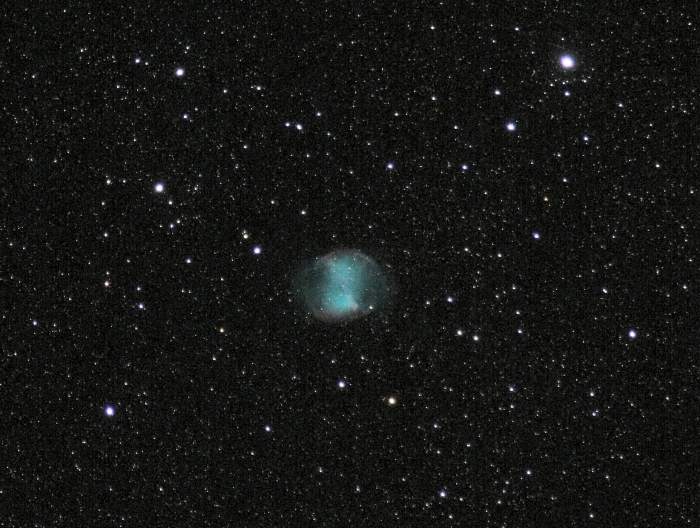
Also in Vulpecula is the Dumbbell planetary nebula, M27, photographed here on
August 13, 2010.
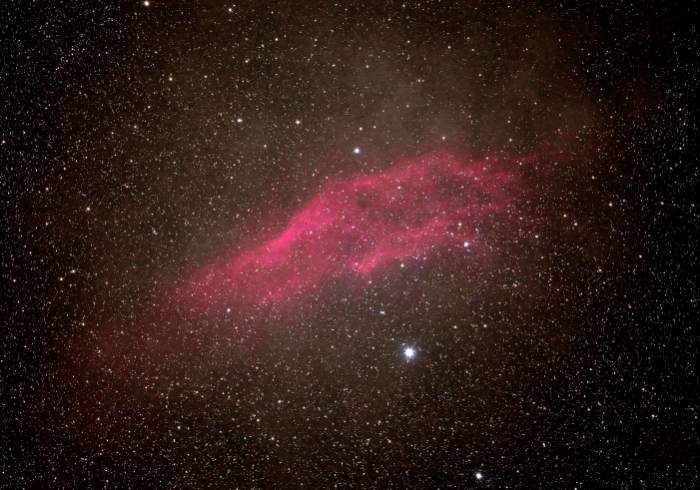
The California Nebula in the constellation Perseus on August 13, 2010.
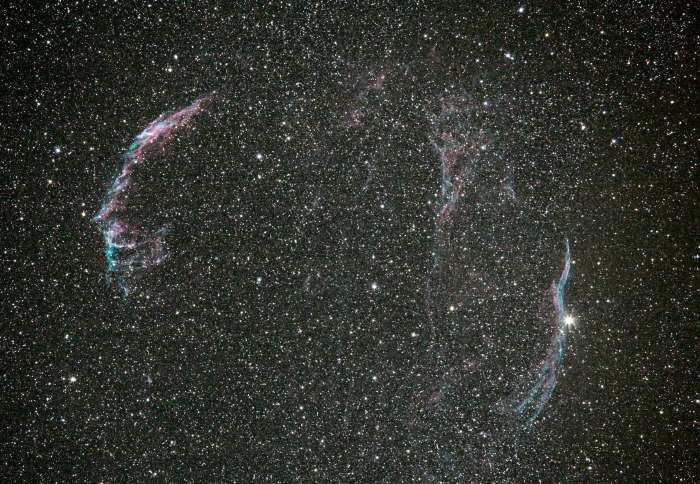
The Veil Nebula in the constellation of Cygnus has three specific areas that are
believed to be the remnants of a ancient supernova. To the left is NGC 6995,
6992, and IC 1340. To the right is NGC 6960, also known as the Filamentary
Nebula. This was imaged on August 13, 2010.
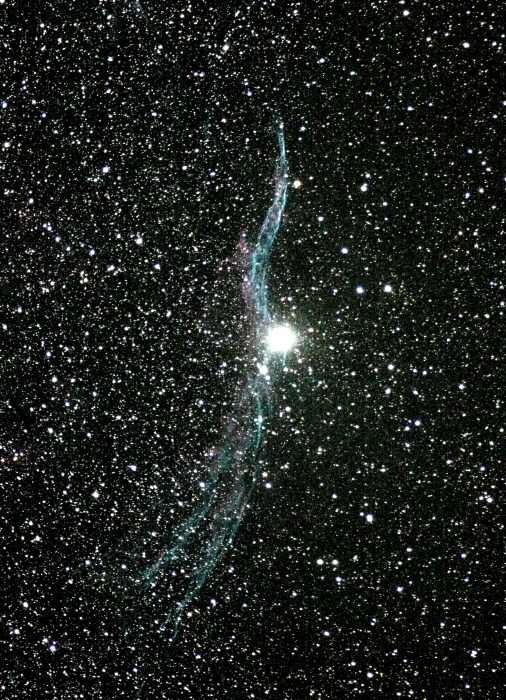
A close-up of the Filamentary Nebula (NGC 6960), and the bright star,
52 Cygni, seen also here on August 13, 2010.
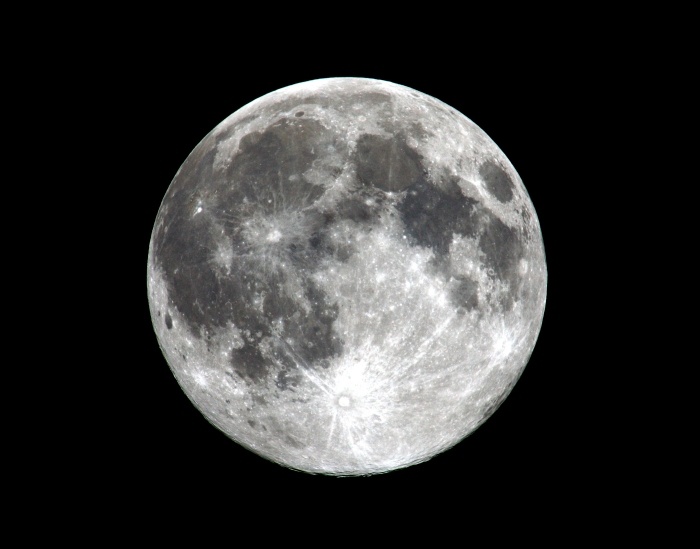
The full moon from Wrightwood, California on September 22, 2010.
The following 9 images were taken from Dantes View in Death Valley NP, CA
on October 10, 2010.
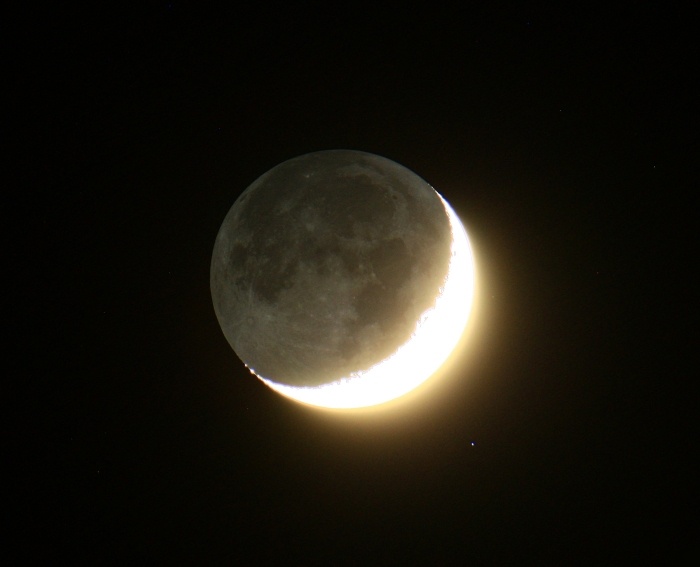
The crescent moon setting in the west.
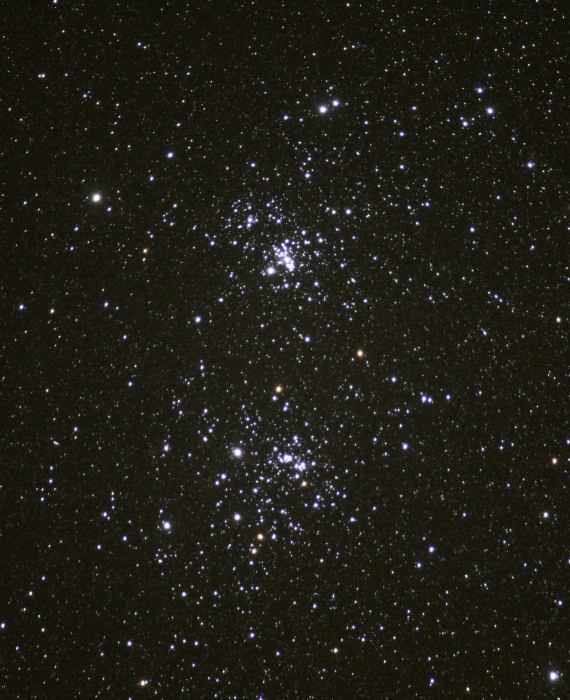
The Double Cluster in the constellation Perseus (NGC 884 - bottom, and 869 - top)
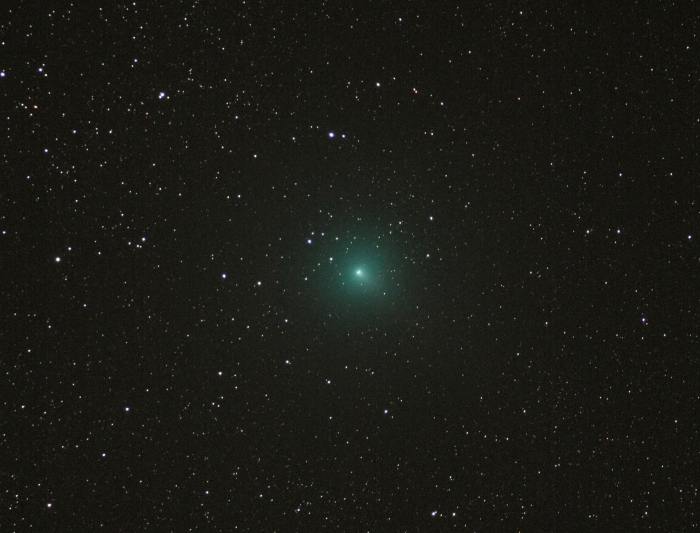
Comet 103P, Hartley 2, imaged here in the constellation Perseus.
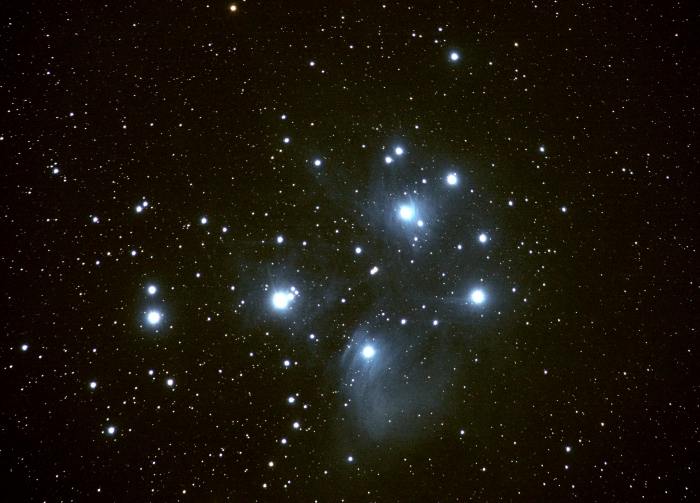
The Pleiades star cluster (M45), in the constellation Taurus, with considerable
nebulosity around several of the stars.
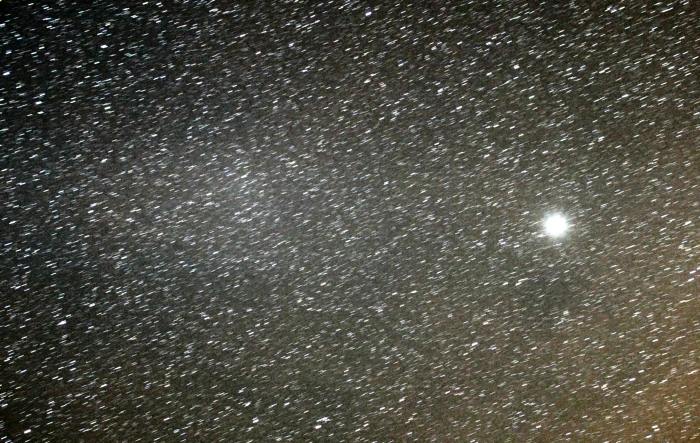
The gegenschein, the very faint patch of light left center, appears opposite the
sun along the plane of the ecliptic. This is likely the reflection of sunlight off
interplanetary dust in the solar system. Bright planet Jupiter is to the right.
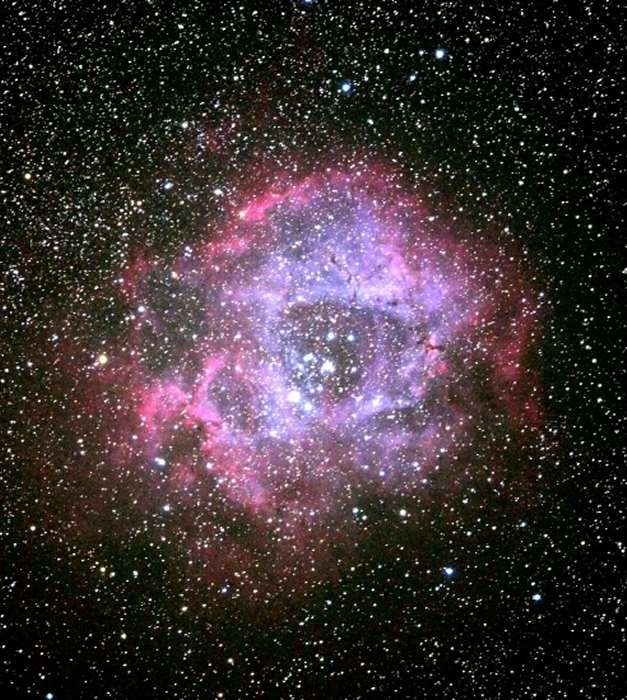
The Rosette Nebula (NGC 2237/8), along with the bright star cluster (NGC
2244) in the very center, are in the constellation of Monoceros.
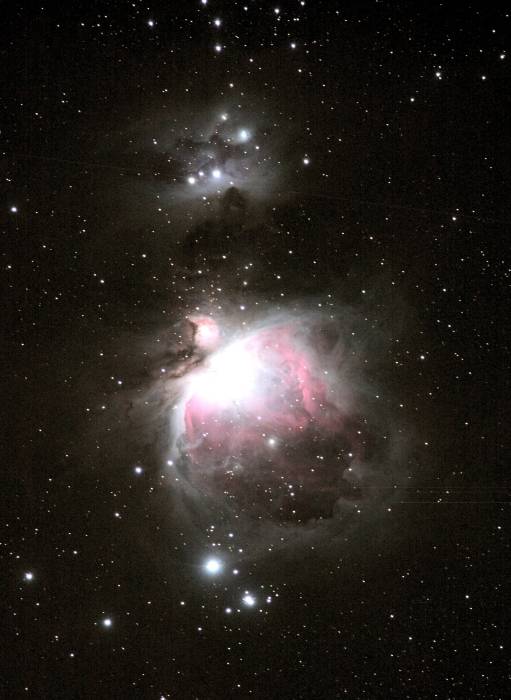
The famous Orion Nebula (M42) in the constellation of Orion. The very small
'pointed' extention from the main bright area, is M43. Above these two, is
the smaller nebula, NGC 1977. Note the three faint geosynchronous satellite
trails to the right center, as recorded during this exposure.
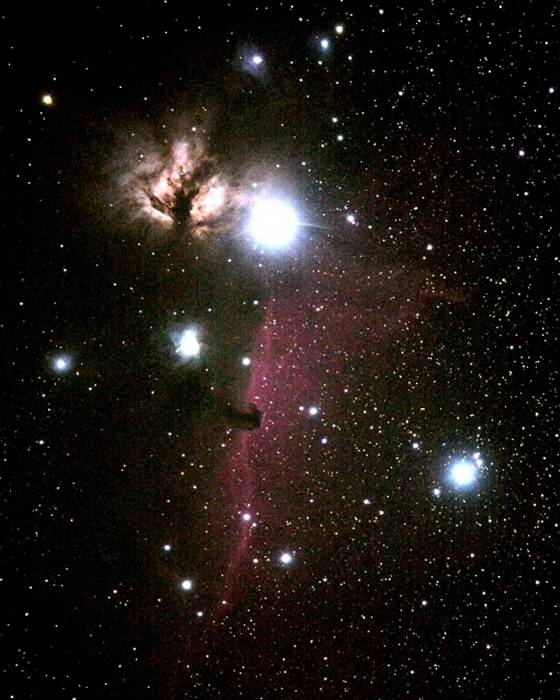
The Horsehead Nebula in the constellation of Orion. The red area is known as
IC 434 (with the horse's head, the dark area). The bright flare nebula to the
top left is NGC 2024. The Horeshead itself is catalogued as Bernard 33.
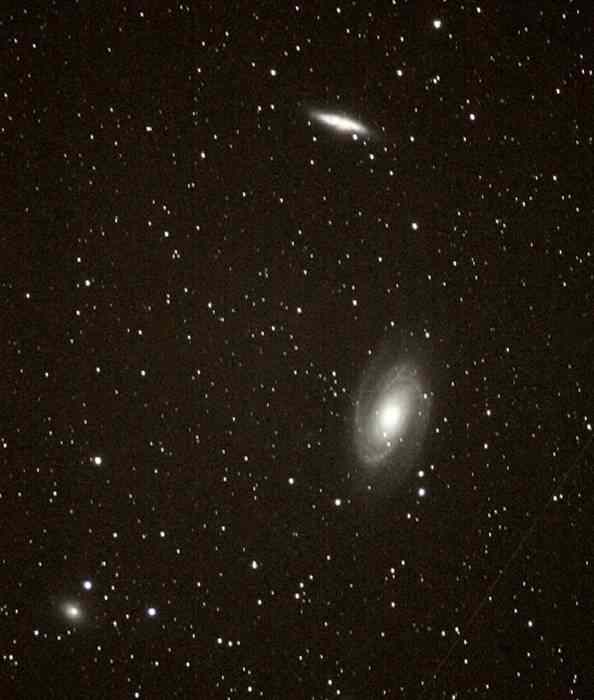
The bright galaxies, M81 (center right) and M82 (top) in the constellation Usra
Major are seen here, along with NGC 3077 in the lower left corner.
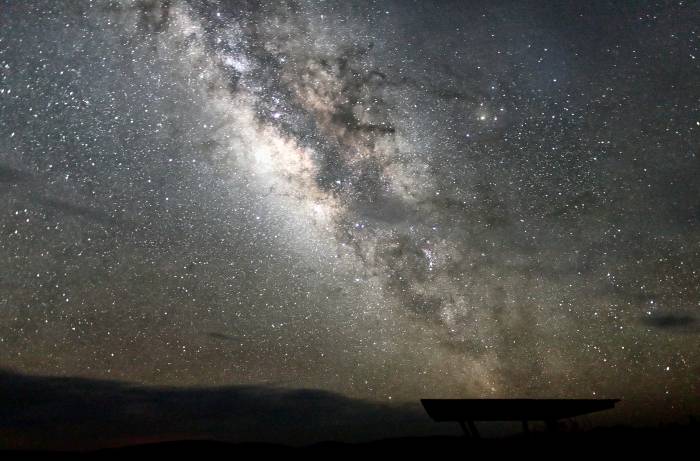
The bright Milky Way galaxy seen from Big Bend NP in Texas on April 7, 2011.
Several clouds can be seen in this image.
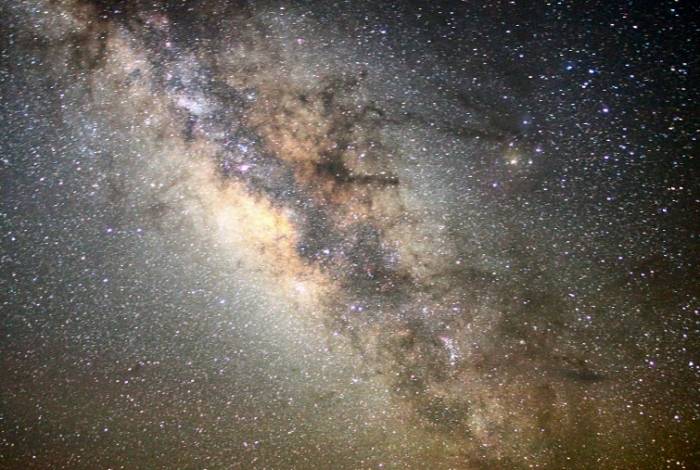
The same as above, but with a telephoto lens looking at the center.
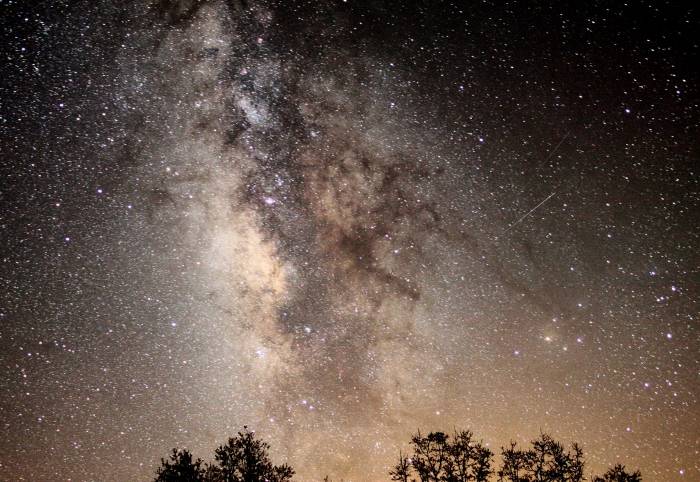
The Milky Way photographed from 9000 feet elevation on the southern side of
Mt. Graham, Arizona on May 12, 2011. Two satellite trails are to the right.
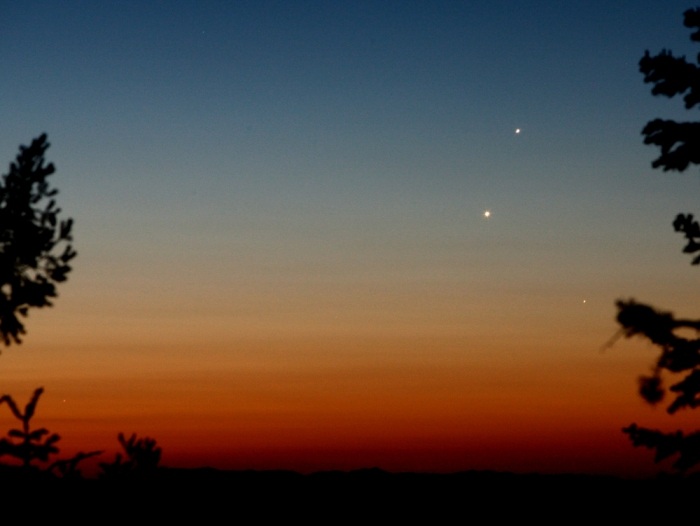
A planetary conjunction at dawn on the morning of May 12, 2011, also from Mt.
Graham, Arizona. The brighter planet Venus, is at right center, with Jupiter
above, and Mars (the fainter one) to the lower right. Mercury is at the lower
left edge next to the tree top, and quite faint.
Grand Canyon National Park on May 13, 2011.
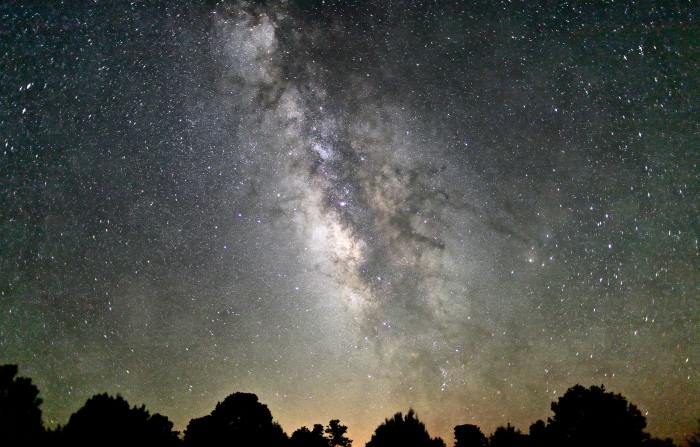
The Milky Way from Grand Canyon NP, Arizona.
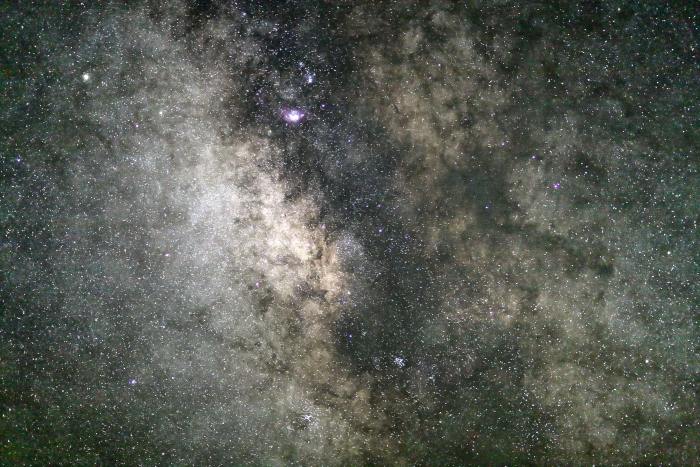
The center of the Milky Way, also as above.
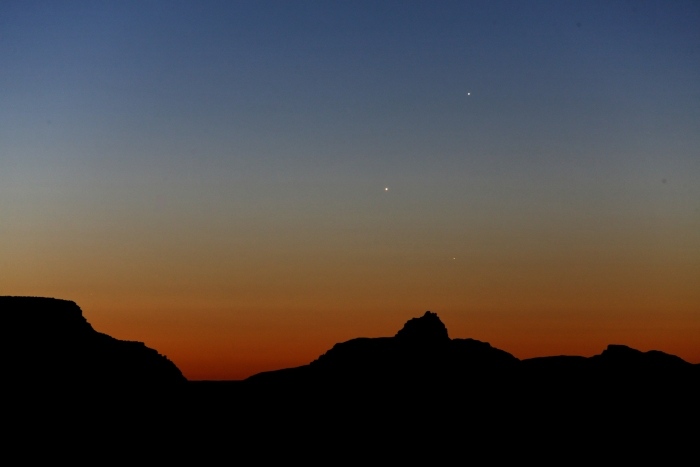
The same planetary conjunction imaged from Mt. Graham the morning before,
is imaged here from the south rim of Grand Canyon NP. Mercury is on the
original image, but does not show here very well (at the left edge, and just
to the right of the flat rim).
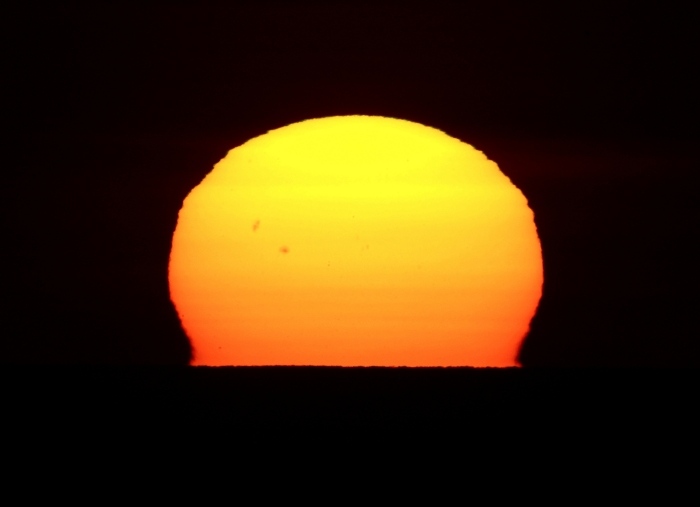
Sunset into the Pacific Ocean from Ecola Park, Oregon on October 25, 2011.
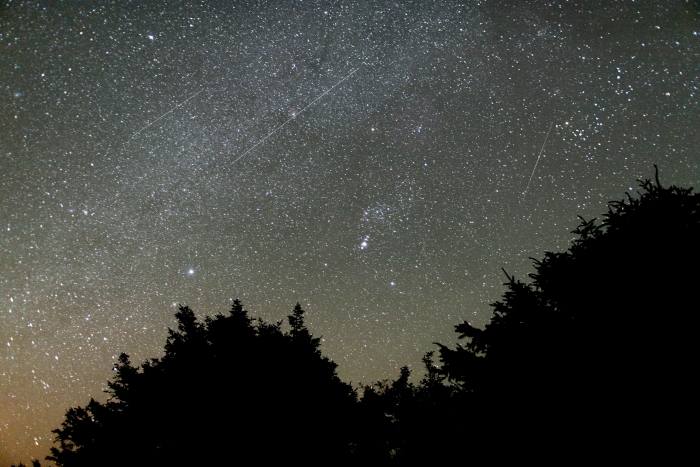
Orion, and the winter Milky Way from Tolavana Park, Oregon (south of Cannon
Beach) on November 2, 2011. Three satellite trails show here, but several
additional trails were detected on the original.
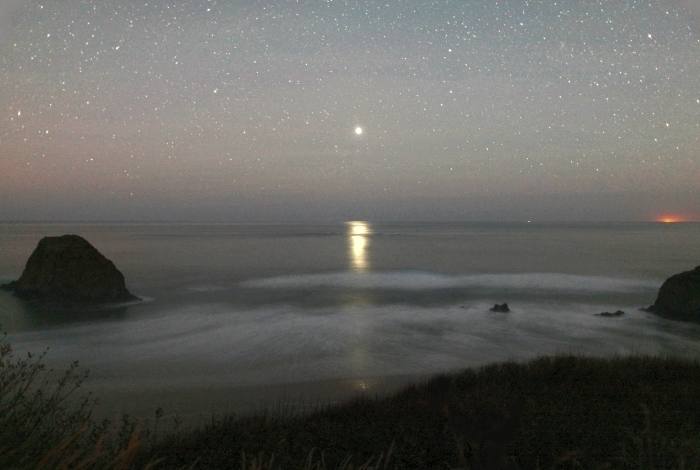
Jupiter setting over the Pacific Ocean from Tolavana Park, Oregon on November
2, 2011.
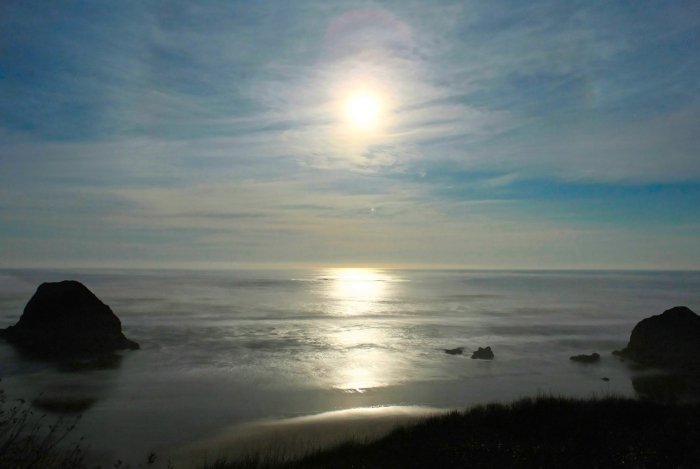
The nearly full moon, and Jupiter (just below the moon, and faint) set into the
west on November 10, 2011 from Tolavana Park, Oregon.
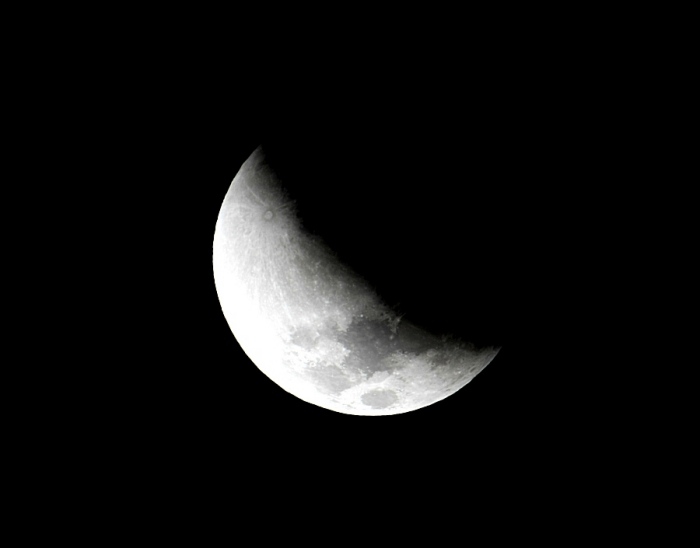
The partially eclipsed moon from Dantes View in Death Valley NP, California
on December 10, 2011 at 5:20 AM local time.
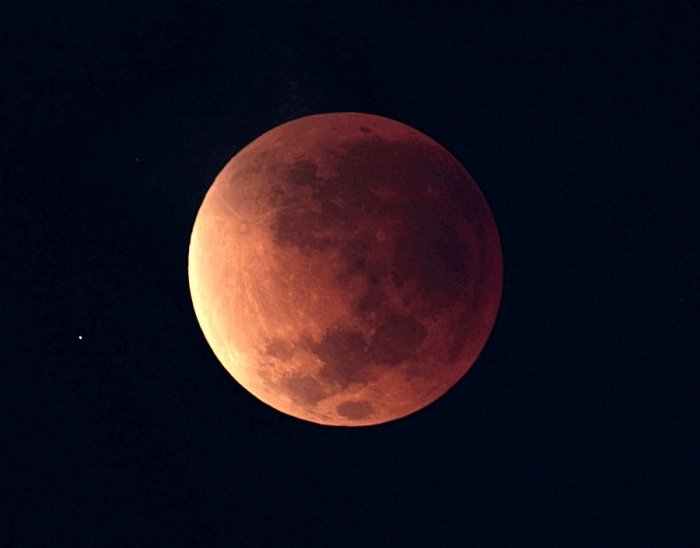
The fully eclipsed moon, at 6:11 AM local time, as noted above.
The full camera/tracker/mounting/lens system setup at 9600 feet on the
northwest slope of Mt. Graham, Arizona. The following 9 images were
recorded on February 10, 2012. The first tests with the modified 20D
camera were made here, and a few results are noted below.
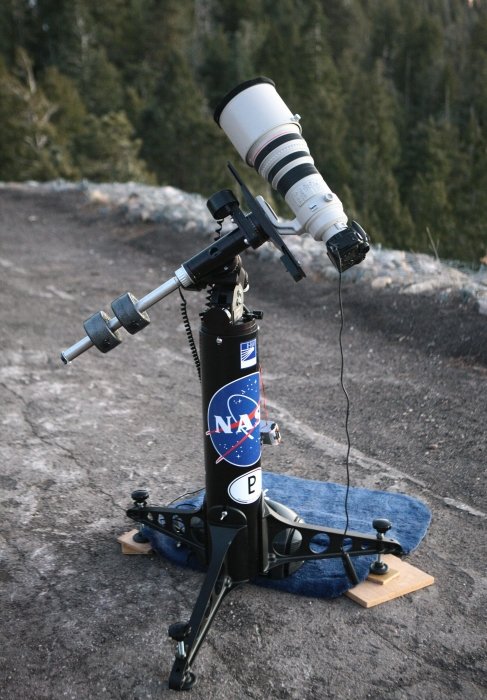
The Losmandy tracker, with the Canon 400mm telephoto lens.
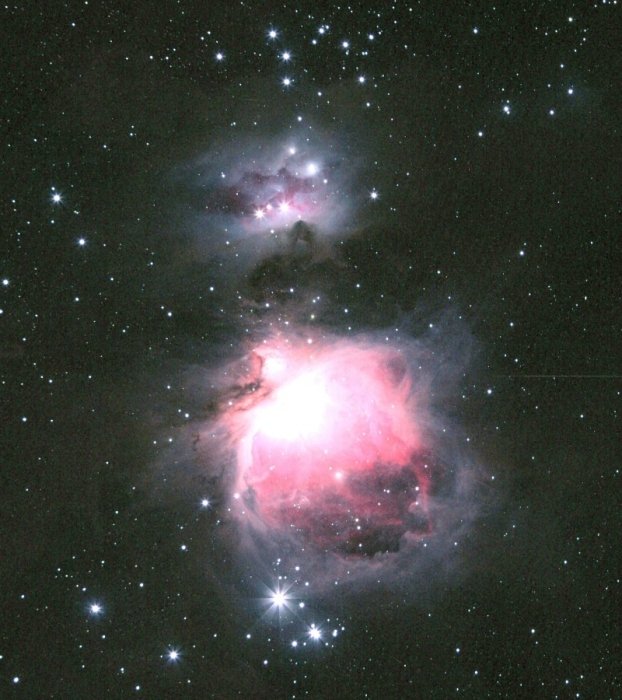
The Orion Nebula with the modified Canon 20D camera. Note the faint streak
of a geosynchronous satellite on the right edge.
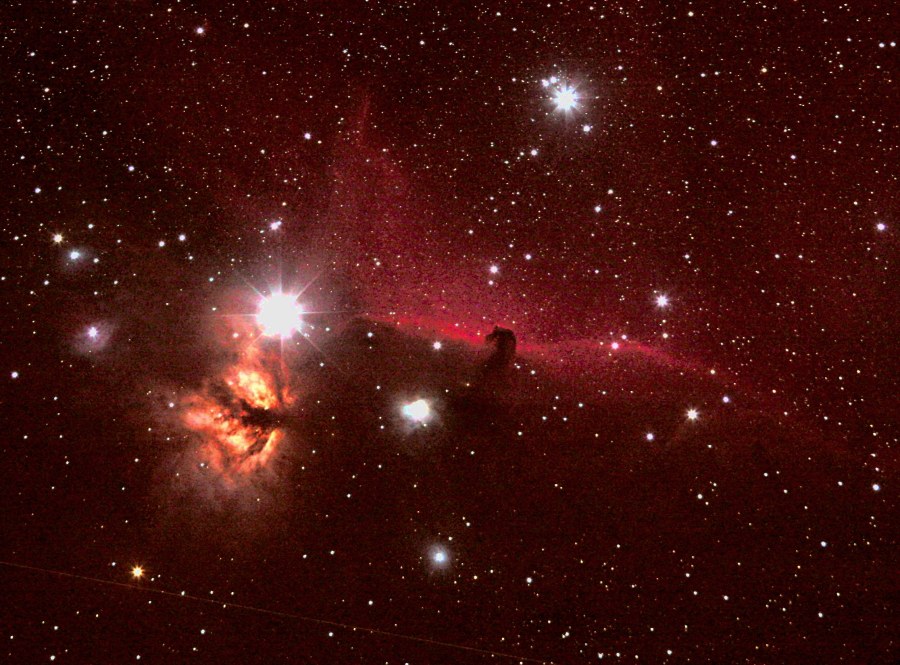
The Horsehead Nebula with the Canon 20D.
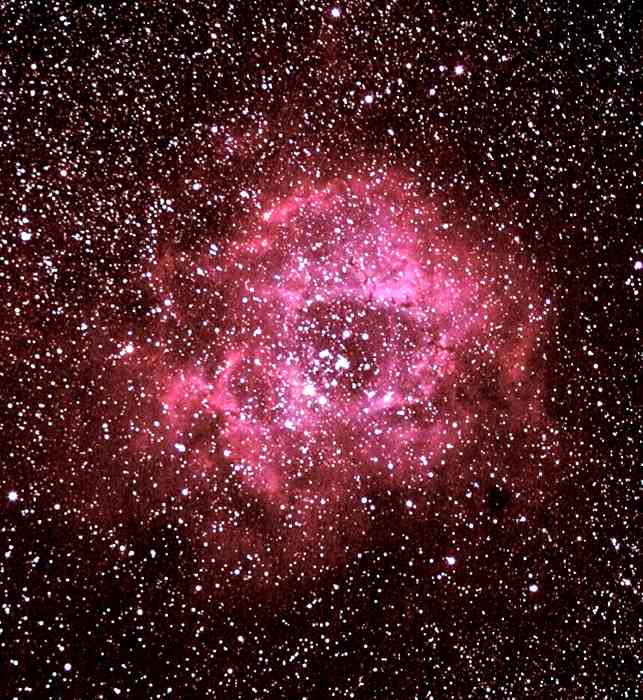
The Rosette Nebula with the Canon 20D.
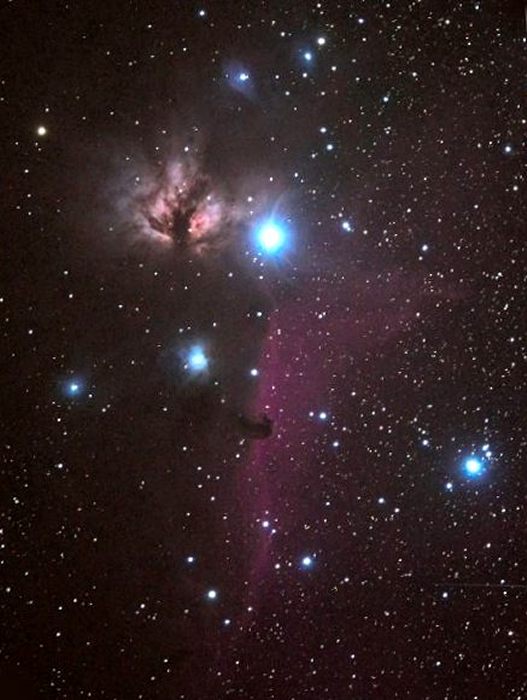
The Horsehead Nebula with the (unmodified) Canon 1Ds Mark III.
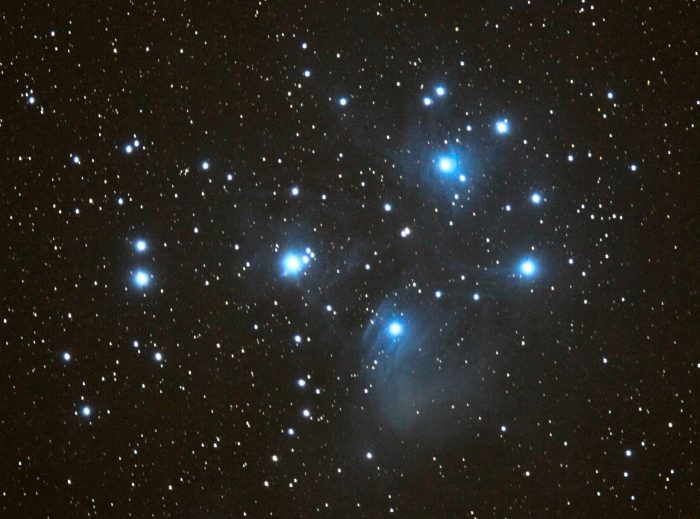
The Pleiades star cluster with the 1Ds Mark III
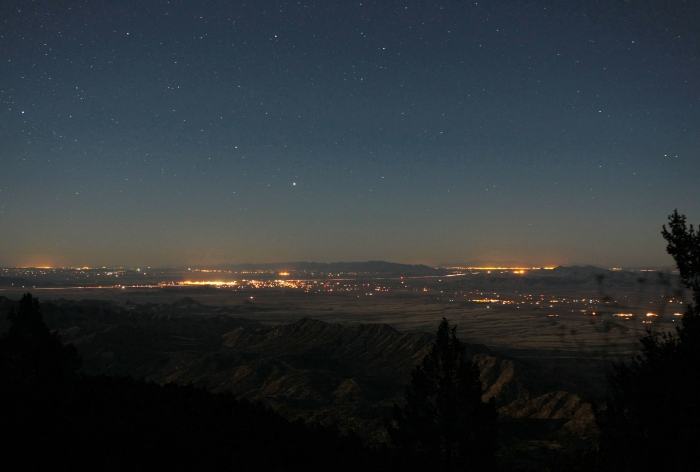
The bright star, Canopus, seen low in the south over the small city of Wilcox,
Arizona (left center), and the glow from the larger communities of Benson and
Douglas further in the distance.
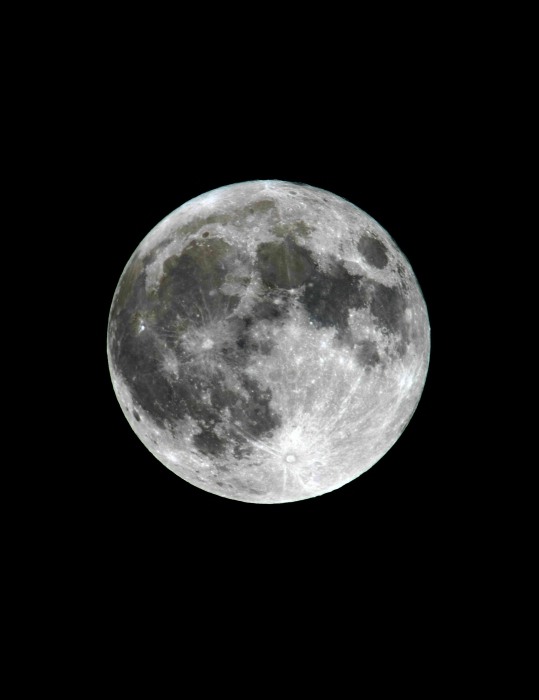
The full moon, as seen from Wrightwood, California on May 5, 2012.
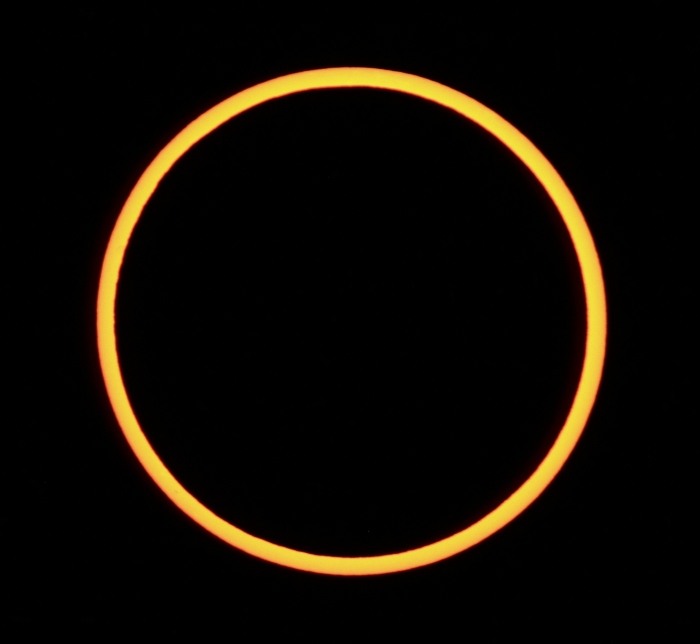
The moment of central annular eclipse of the sun, photographed from near Page,
Arizona on May 20, 2012.
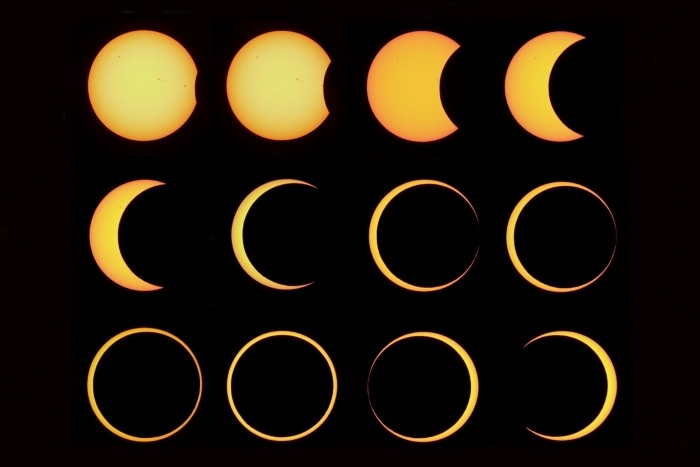
The progression of the May 20th eclipse, from upper left, to lower right.
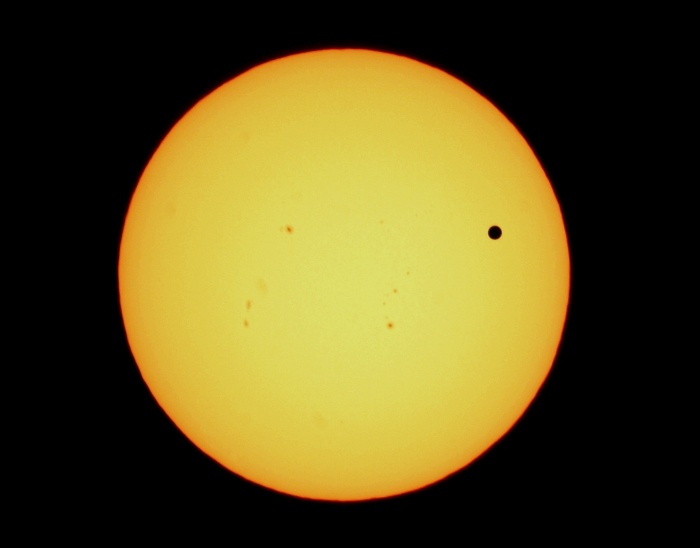
The much awaited transit of Venus, imaged from Wrightwood on June 5, 2012.
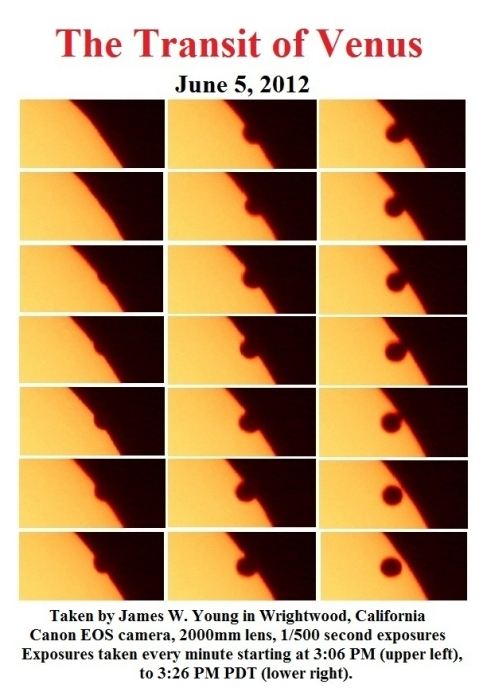
The progression of the transit of Venus from first contact (upper left), and
taken every minute until Venus was fully over the sun's disk (lower right).
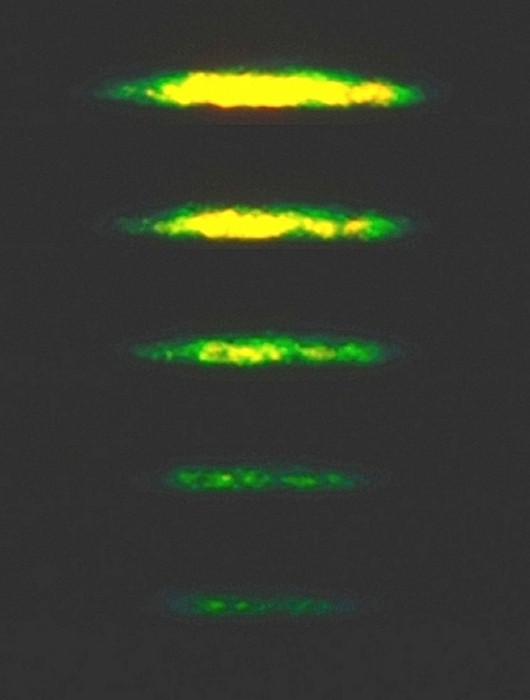
The green flash imaged here with 5 exposures spanning 7 seconds of time on
June 24, 2012, as the sun set into the Pacific Ocean from Seaside, Oregon.
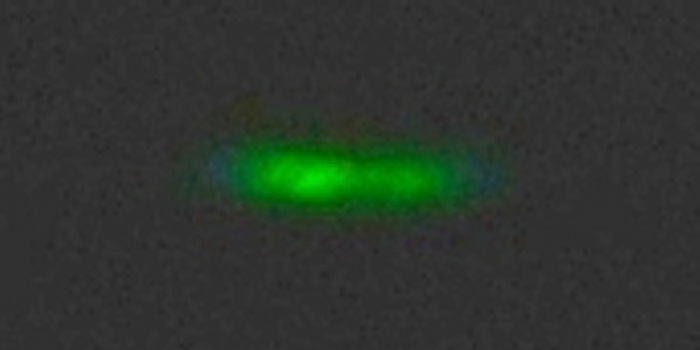
The green flash photographed the following day from Cannon Beach, Oregon. Not
expecting this event to occur, I managed only one image, hand held as well! The
blue color was very evident to the unaided eye during the end of this 5-8 second
event.
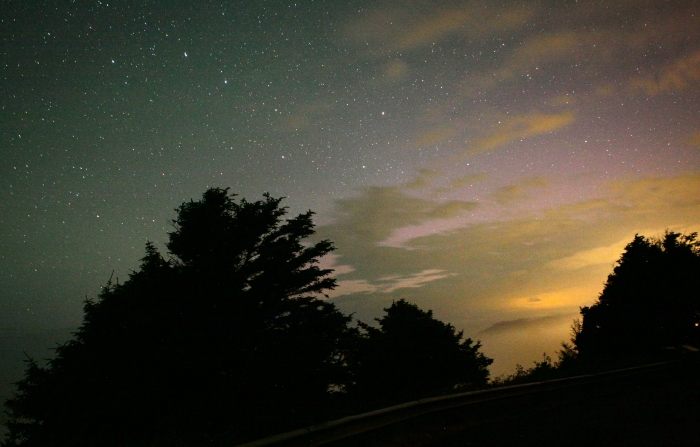
A large X-flare unleashed from the sun on July 12, 2012 created bright aurora
across the northern United States (and elsewhere). It was cloudy on the coast
of Oregon until July 15, 2012, so with clearing skies that evening I was able to
detect the faint pink sky colors of the last of this display.
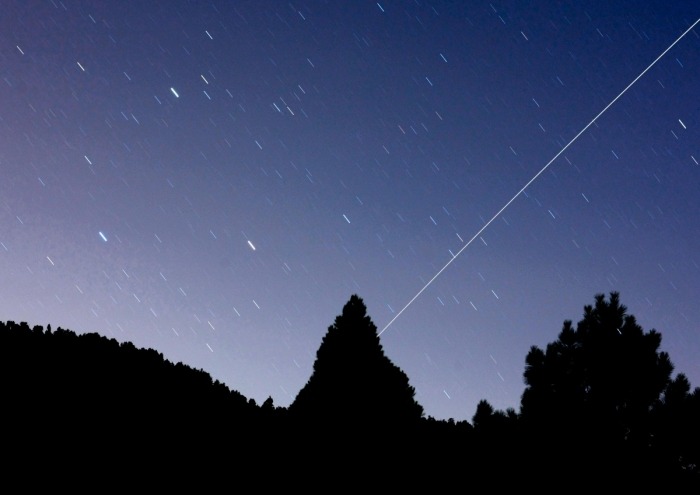
The International Space Station streaks across the skies above Wrightwood on
August 7, 2012. In this 2 minute exposure, the stars are trailed, with alpha
Virginis (Spica) to the left center, with Mars above and Saturn closer to the
center.